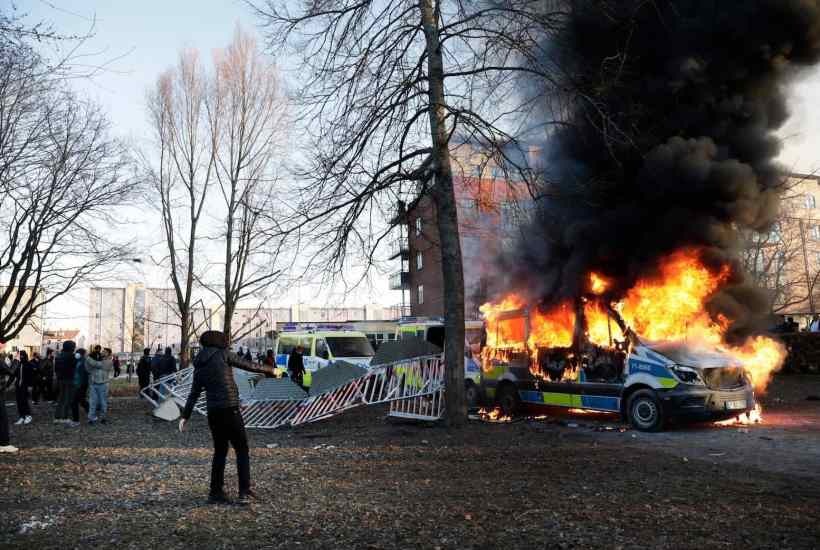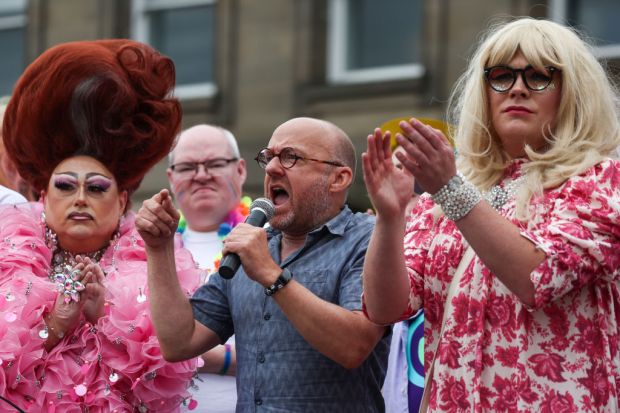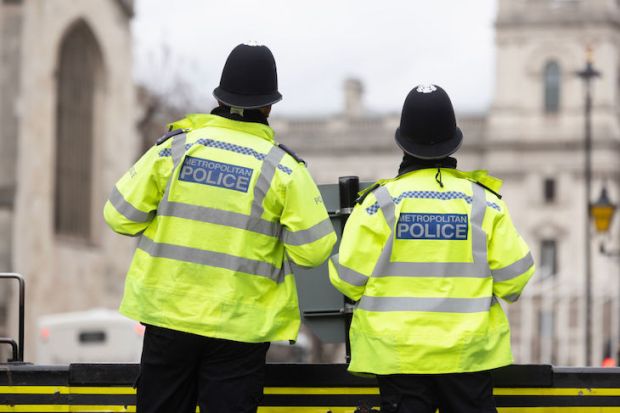Sweden has seen streets riots before. The country has witnessed attacks on police and rescue workers. But what played out this Easter weekend has left Swedes in shock.
Rasmus Paludan, a Danish politician on the extreme right who also holds Swedish citizenship, decided to tour the country last week, seeking out immigrant neighbourhoods where he could stage public burnings of the Quran. Paludan’s support in Sweden is isolated to the very fringes of the extreme right, especially since it was alleged last year that he had written sexually explicit messages to underage boys online. But there is no prohibition against blasphemy in Swedish law, which is why the police granted him permission for his rallies.
Chaos erupted almost everywhere he went. In neighbourhood after neighbourhood, police were pelted with rocks by furious rioters. In the southern town of Örebro, a police vehicle was hijacked and driven around in triumph by masked men. Other rioters were showing off police jackets and helmets, looted from patrol cars. In Malmö, rioters threw a burning object into a city bus, forcing passengers to evacuate. As the bus went up in flames, rescue workers were shot at with fireworks. Rioters drove cars full of rocks to the clashes to use as ammunition. Molotov cocktails were hurled at police. Testimonies flooded social media of officers fearing for their lives.
‘We have seen violent riots before. But this is something else,’ chief of police Anders Thornberg explained in a public statement on Saturday. ‘It is a matter of gross violence against life and property, especially against police officers.’ On television two days later he described a widespread sense among police officers that one did not know ‘if you will return home after work, if you will be alive or not when the shift is over and you are met by merciless violence from several hundred.’ In total, 26 police officers were injured in the chaos.
According to the police authority, many of the rioters are involved in criminal gangs. These are the very same gangs that already terrorise their neighbours and compete with the state and local authorities for control of called Sweden’s ‘vulnerable’ immigrant areas.
But this time, it’s not only men on the streets. ‘The weird thing is that even women aged 40 to 60 throw rocks at us,’ a police officer wrote on Facebook. ‘Their children do the same’. Another policeman described the choices he faced to the newspaper Expressen:
Should I use force against a 12-year-old in front of the 12-year-old’s mother or vice versa? I would never do that. I do not want to wrestle a 12-year-old to the ground, but at the same time, it is the 12-year-old who throws a big rock.
Police tactics in response to the unrest varied between different cities. In Norrköping, three protesters were injured by ricochets when police finally fired warning shots on Sunday after days of violence. In the Rosengård district in Malmö the same night, police used tear gas to disperse the crowds.
Things were different in Linköping, where police decided to temporarily retreat and leave a neighbourhood to avoid further escalation. It is not the first time that Swedish police have decided to simply retreat. During riots in the Stockholms mainly-immigrant suburb of Rinkeby in 2017, police backed out and left neighbourhoods to lawlessness. As fires raged, fire engines had to park and wait at a distance because police deemed the area too dangerous for any first responders including firefighters to enter. The order from police headquarters to their staff was simple: ‘Safety of the police officers first. No interventions, observe caution. At this point, we enter [the area] only to save lives.’
That time too local criminals viewed the retreat of the police as a great victory. Rasmus Paludan is promising a new tour of Quran burnings next week and Sweden is bracing for more unrest. Meanwhile, citizens in immigrant neighbourhoods are left to deal with the destruction left by rioters, who, needless to say, represent only a minority of inhabitants. Some 200 children at the Rosengård school in Malmö had to stay at home this week since their school had been set on fire during the riots.
What to make of it all? It would be a mistake to view the events this Easter as purely the result of Rasmus Paludan’s actions – not least because that would deny the rioters any moral agency. Paludan may have been the spark that caused the explosion this time, but tensions have been building for decades in Sweden. The Easter riots merely revealed the level of aggression brewing under the surface and how quickly it can descend into violence.
Meanwhile, gang shootings are at a record high this spring, with 18 deaths in the first three months of the year. There are new shootings every week and at times almost every day. Last year, a government agency issued a report which concluded that Sweden was already the country with the highest rates of deadly shootings among the 22 European countries surveyed. The use of explosives among criminal gangs in Sweden has no equivalent in any other western nation.
Sweden’s neighbours know how serious the situation has become. Denmark recently cited Swedish gang crime and the risk of terror attacks when it decided to extend its temporary border controls to Sweden – an extraordinary decision given that the two countries have been in a passport union since 1952.
Sweden’s descent into social unrest is a remarkable development in what was once one of Europe’s most stable societies. It is a development that other western countries would be wise to watch very closely, in order not to repeat the same mistakes.
Got something to add? Join the discussion and comment below.
Get 10 issues for just $10
Subscribe to The Spectator Australia today for the next 10 magazine issues, plus full online access, for just $10.




















Comments
Don't miss out
Join the conversation with other Spectator Australia readers. Subscribe to leave a comment.
SUBSCRIBEAlready a subscriber? Log in